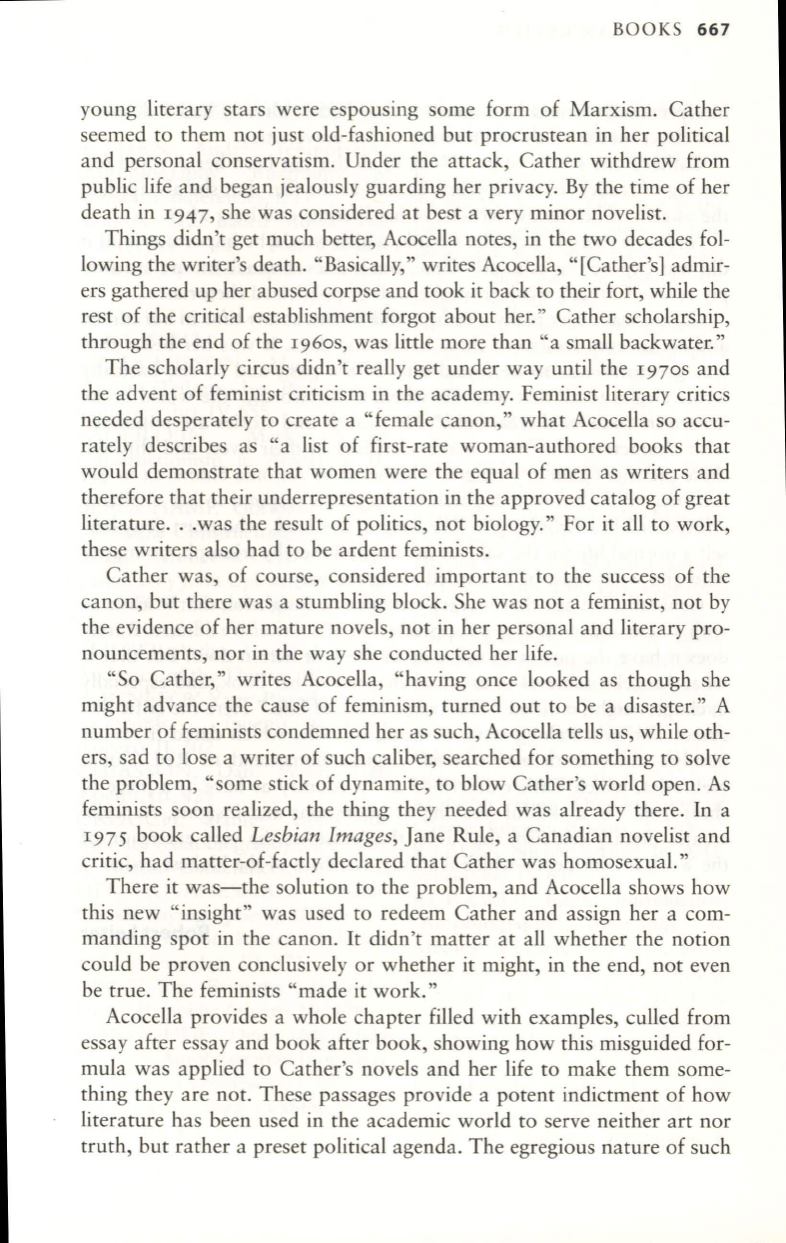
BOOKS
667
young literary stars were espousing some form of Marxism. Cather
seemed to them not just old-fashioned but procrustean in her political
and personal conservatism. Under the attack, Cather withdrew from
public life and began jealously guarding her privacy. By the time of her
death in I947, she was considered at best a very minor novelist.
Things didn't get much better, Acocella notes, in the two decades fol–
lowing the writer's death. "Basically," writes Acocella, "[Cather's] admir–
ers gathered up her abused corpse and took it back
to
their fort, while the
rest of the critical establishment forgot about her." Cather scholarship,
through the end of the I96os, was little more than "a small backwater."
The scholarly circus didn't really get under way until the I970S and
the advent of feminist criticism in the academy. Feminist literary critics
needed desperately to create a "female canon," what Acocella so accu–
rately describes as "a list of first-rate woman-authored books that
would demonstrate that women were the equal of men as writers and
therefore that their underrepresentation in the approved catalog of great
literature. . .was the result of politics, not biology." For it all
to
work,
these writers also had
to
be ardent feminists .
Cather was, of course, considered important
to
the success of the
canon, but there was a stumbling block. She was not a feminist, not by
the evidence of her mature novels, not in her personal and literary pro–
nouncements, nor in the way she conducted her life.
"So Cather," writes Acocella, "having once looked as though she
might advance the cause of feminism, turned out to be a disaster." A
number of feminists condemned her as such, Acocella tells us, while oth–
ers, sad to lose a writer of such caliber, searched for something to solve
the problem, "some stick of dynamite, to blow Cather's world open. As
feminists soon realized, the thing they needed was already there. In a
I975 book called
Lesbian Images,
Jane Rule, a Canadian novelist and
critic, had matter-of-factly declared that Cather was homosexual."
There it was-the solution to the problem, and Acocella shows how
this new "insight" was used to redeem Cather and assign her a com–
manding spot in the canon. It didn't matter at all whether the notion
could be proven conclusively or whether it might, in the end, not even
be true. The feminists "made it work."
Acocella provides a whole chapter filled with examples, culled from
essay after essay and book after book, showing how this misguided for–
mula was applied
to
Cather's novels and her life to make them some–
thing they are not. These passages provide a potent indictment of how
literature has been used in the academic world to serve neither art nor
truth, but rather a preset political agenda. The egregious nature of such


